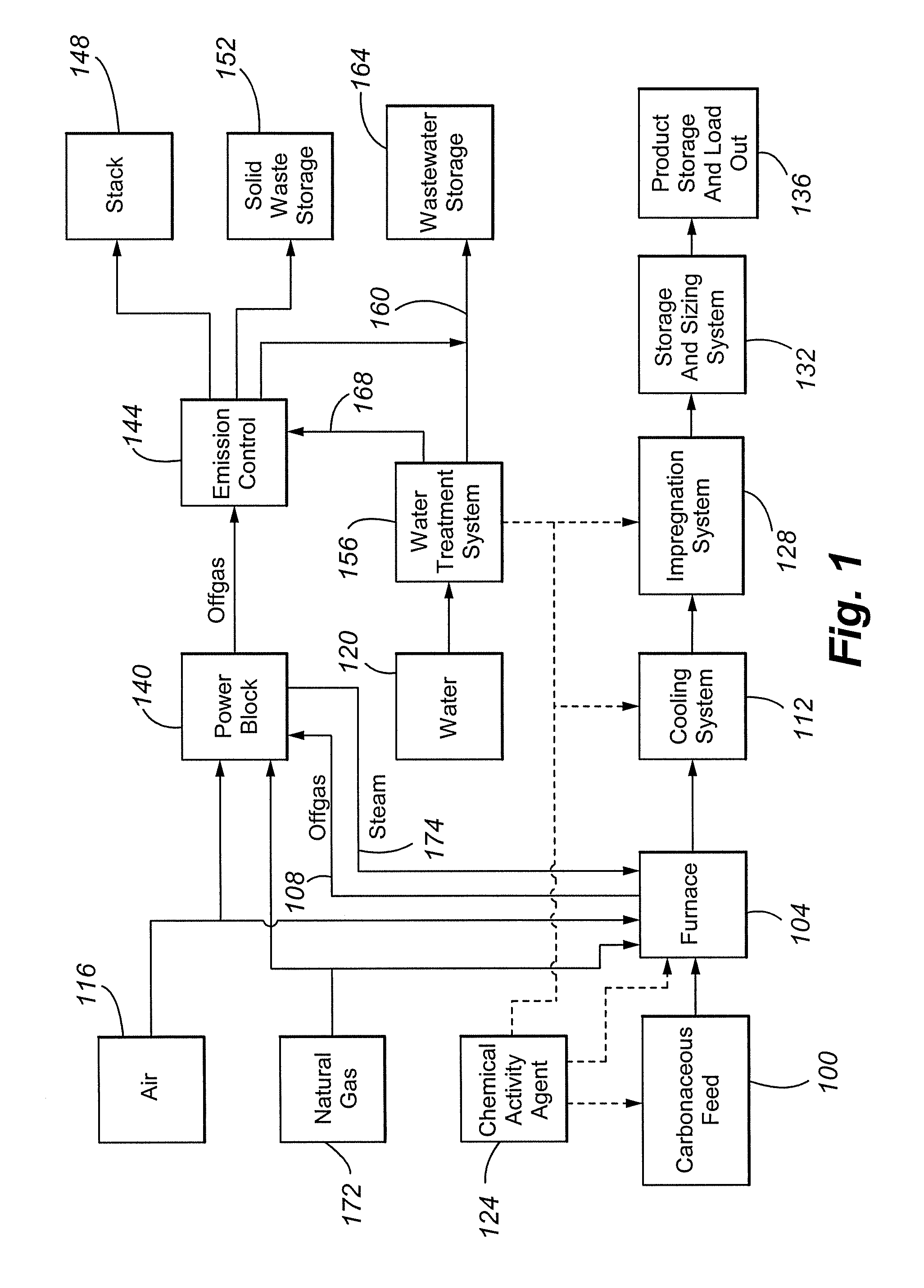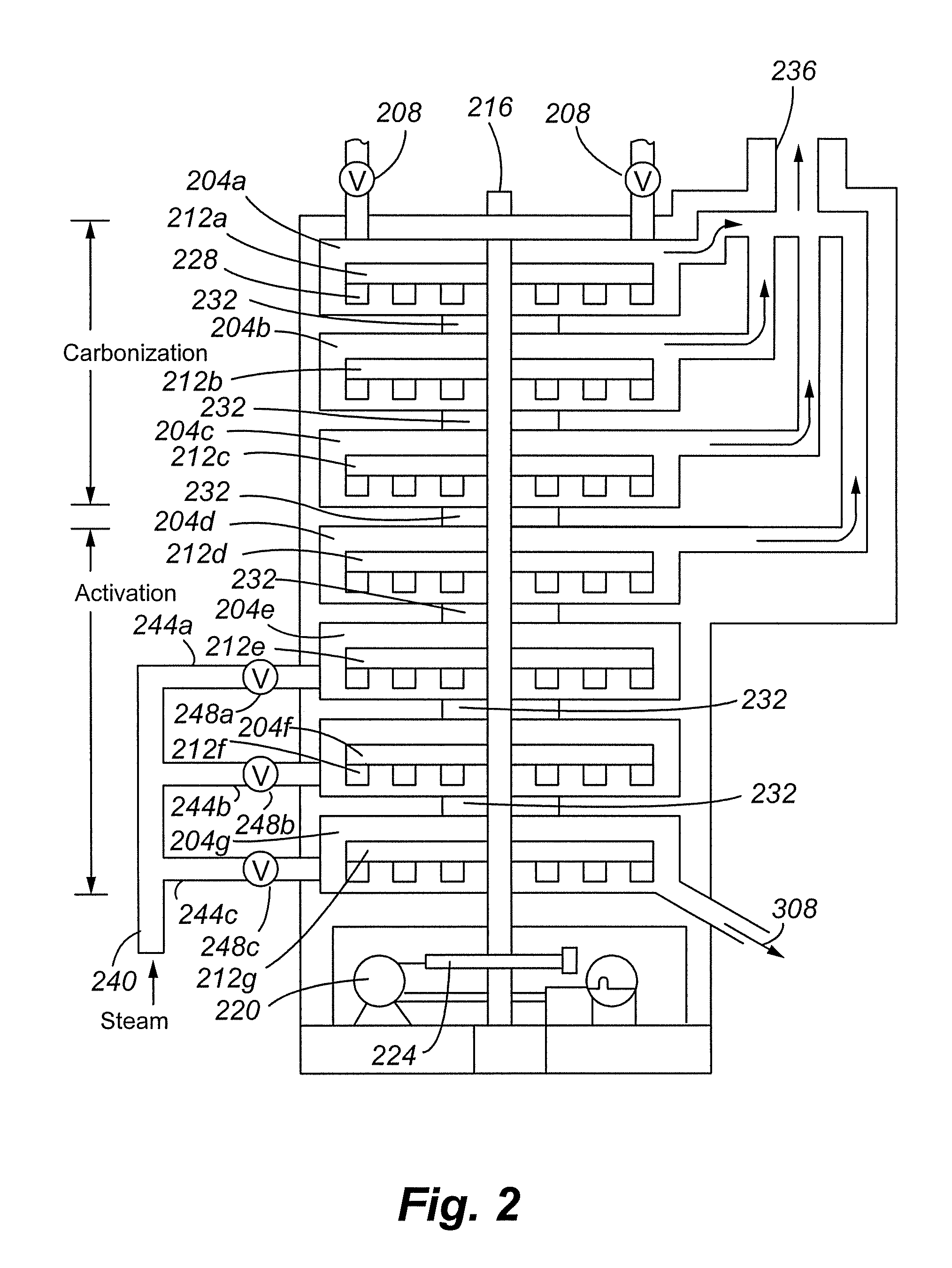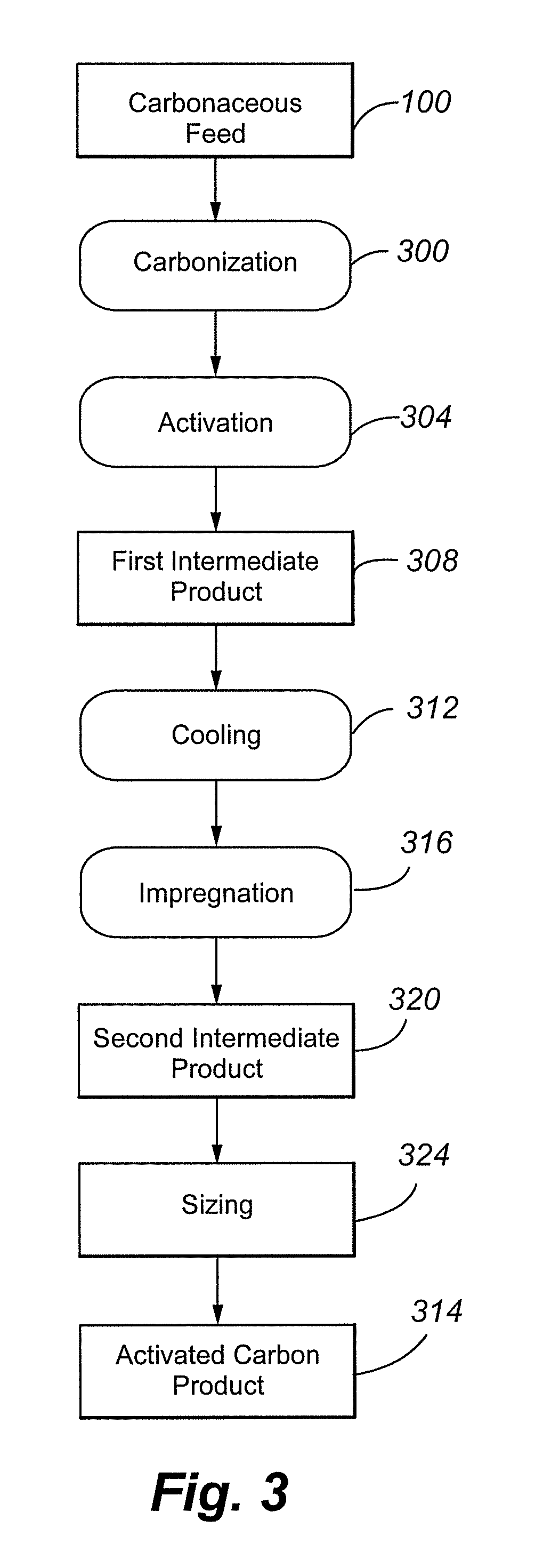Process for the manufacture of carbonaceous mercury sorbent from coal
a technology of carbonaceous mercury and sorbent, which is applied in the field of sorbents, can solve the problems of slow carbon dioxide reaction rate, restricted carbon dioxide access to micropores, and slow diffusion of carbon dioxide into the porous system, so as to maximize product yield, short residence time, and high mesoporous surface area
- Summary
- Abstract
- Description
- Claims
- Application Information
AI Technical Summary
Benefits of technology
Problems solved by technology
Method used
Image
Examples
example 1
[0073]As an example of the claimed improvements, sample S45 was a 30 minute activation of coal from the Black Thunder PRB mine. This is the largest mine in the Powder River Basin and is representative of the higher rank 8,800 lb / mmbtu southern PRB coals. The sample was steam activated for 30 minutes at 800° C. and gave an overall yield of 33.7%. Compared to the industry standard lignitic PAC, this coal has lower moisture and ash and higher fixed carbon. Ash in the final sorbent was 15.9% compared to 30% for the reference DARCO Hg. Total surface area achieved for S45 was 583 m2 / gm, or approximately the same as the reference DARCO Hg carbon. Mercury removal was 71% at Plant 1 and 73% at Plant 2. DARCO Hg mercury removal was 65% and 67% at Plant #1 and Plant #2, respectively. Surface reducing capacity was 12.4 Meq / gm compared to 11.0 for the reference activated carbon. Thus, the experimental carbon achieved significantly higher yield, lower ash, equal surface area, improved mercury per...
example 2
[0074]Sample S51 was a Louisiana lignite coal that was steam activated for 45 minutes. Total developed surface area was 720 m2 / gm and 362 m2 / gm mesoporous surface area. Overall yield was only 21%. Mesoporous surface area was 50% of the total surface area. Surface reducing capacity was 15.9 Meq / gm and mercury removal was 81.5% and 81.4% for Plant #1 and Plant #2, respectively. This was the best performing experimental mercury sorbent. However, the yield was approximately the same as conventional activated carbons produced in multi-hearth furnaces. Because the performance was much higher than an equivalent conventional carbon, the activation could have been optimized for higher yield. Sample S48 is a further example of reduced activation and still superior performance for this same coal. For S48, mesoporous surface area was 42% of total surface area and product yield was 27.2%.
[0075]A number of variations and modifications of the invention can be used. It would be possible to provide ...
PUM
| Property | Measurement | Unit |
|---|---|---|
| temperature | aaaaa | aaaaa |
| molar ratio | aaaaa | aaaaa |
| partial pressure | aaaaa | aaaaa |
Abstract
Description
Claims
Application Information
 Login to View More
Login to View More - R&D
- Intellectual Property
- Life Sciences
- Materials
- Tech Scout
- Unparalleled Data Quality
- Higher Quality Content
- 60% Fewer Hallucinations
Browse by: Latest US Patents, China's latest patents, Technical Efficacy Thesaurus, Application Domain, Technology Topic, Popular Technical Reports.
© 2025 PatSnap. All rights reserved.Legal|Privacy policy|Modern Slavery Act Transparency Statement|Sitemap|About US| Contact US: help@patsnap.com



